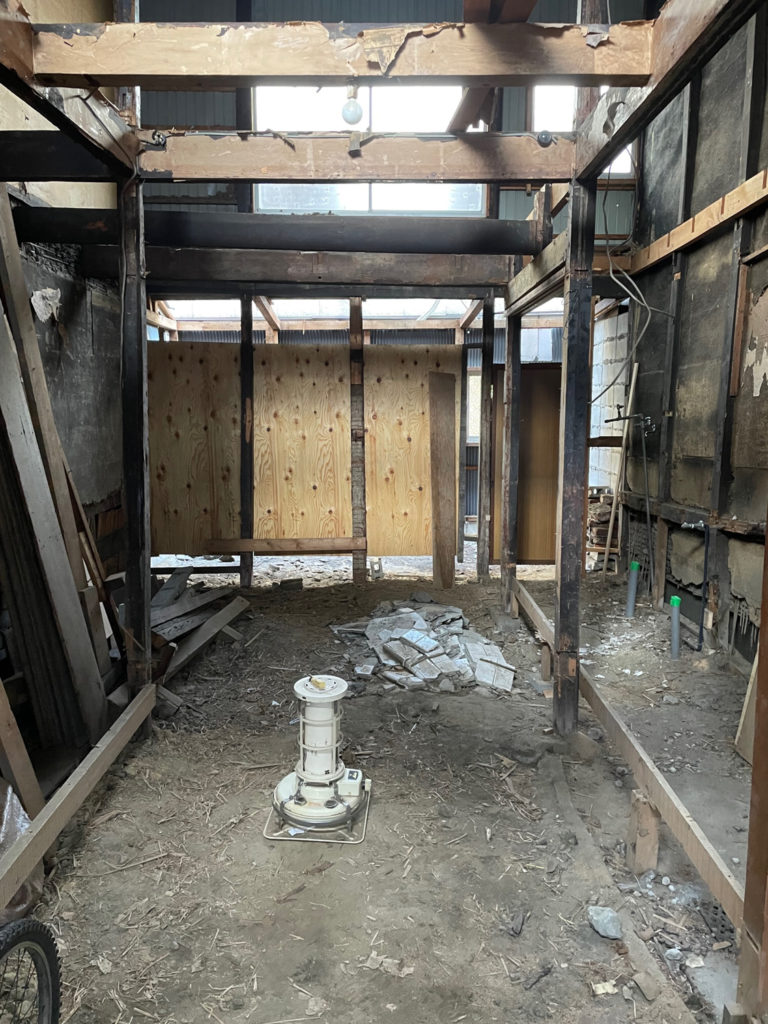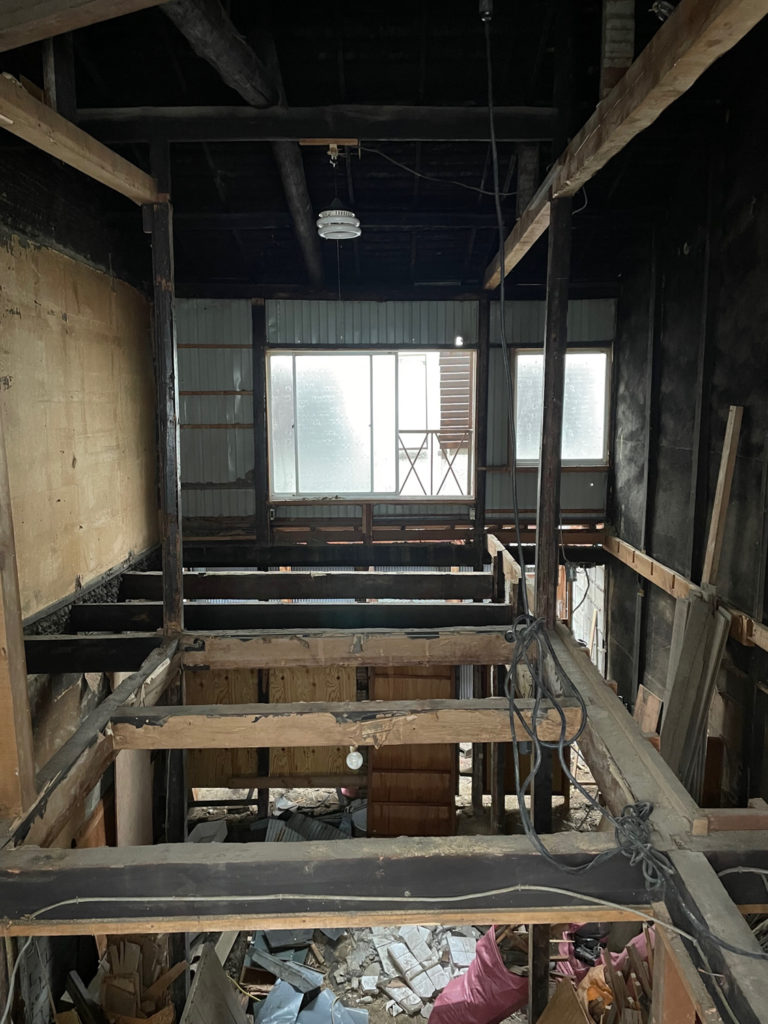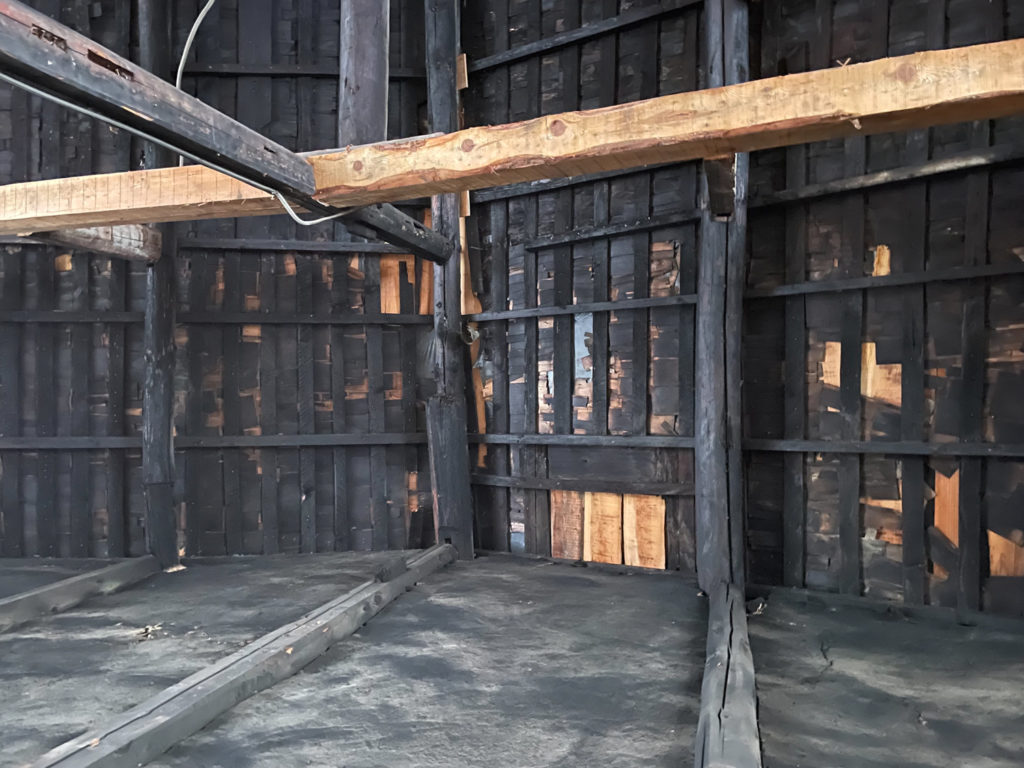I first visited Kyoto about 20 years ago. I was studying in Tokyo at the time and my parents were visiting from Denmark. My mother was looking forward to seeing the old Japanese gardens and young girls in Kimonos. I was hoping to see a well-preserved city of traditional houses and cobbled streets. We had found a cheap Ryokan in Diane Durston’s wonderful little “Old Kyoto” guide book (this was well before AirBnB and booking.com). Our tatami room overlooked the small Takasegawa river in the formerly red-light district known as Gojorakuen; Gojo Pleasure Park!. A small bakery next door sold freshly baked buckwheat cookies as crisp as a cold winter morning. We quickly became hooked.
To be honest, Kyoto left me rather disappointed. The monstrosity of Hiroshi Hara’s spaceship station that gobbles up and spits out trains is to me one of the worst examples of bubble-year architecture in Japan. It’s ugly, hugely disproportionate and a pain to navigate. We saw some lovely temples and, of course, the Disney Landesque couple of streets in Gion was, and still are, lovely, but most of the rest of Kyoto was just as gritty and chaotic as Tokyo or any other large city in Japan. I had somewhat naively expected the whole city to look like Gion.
Since then, I consciously avoided going to Kyoto and until recently had probably only been to Kyoto a handful of times in the 20+ years I’ve been living in Japan. I liked Nara a lot better. It’s smaller, much more approachable and the old town area of Naramachi is a nice mix of homes, cafes, guest houses, restaurants and the like. Much more authentic than Gion. I thought Nara might be a nice place to get a small, old house to renovate and then use as a getaway or eventually move.
But then the pandemic hit, and hit Kyoto particularly hard. All the tourists disappeared overnight and the city could breathe again. I made some really good friends at a Tent Sauna Party at the shores of Lake Biwa just north of the city, and they started showing me a side of Kyoto that I didn’t know but immediately fell in love with. Natural Wine bars, local sentos (most with Saunas!). Cantonese and Korean restaurants. Lazy afternoons with beers by the Kamogawa river. I began thinking that Kyoto might also be a nice place to get a small, old house to renovate.
I’d been casually looking for places to buy in Nara for about two years but without any luck. When I started looking in Kyoto several interesting houses came up within my relatively modest budget. A friend introduced me to a local real-estate agent and he took me around to a couple of houses mid December 2021.
The third house I visited was just right. It was a small Nagaya, just a stone’s throw from where I stayed in Gojorakuen all those years ago with my parents. It’s probably around 100 years old, but both the real estate agent and my neighbours are not really sure. Nagaya are small row houses, built quickly and often with recycled materials of dubious quality. They were meant to provide cheap housing for a quickly expanding city without too much fuss and without too much privacy. They share walls with their neighbours and these are made in the old shinkabe tradition where the cavity between the pillars making up the structural part of the walls are filled with earth on a rough lattice made of split bamboo.
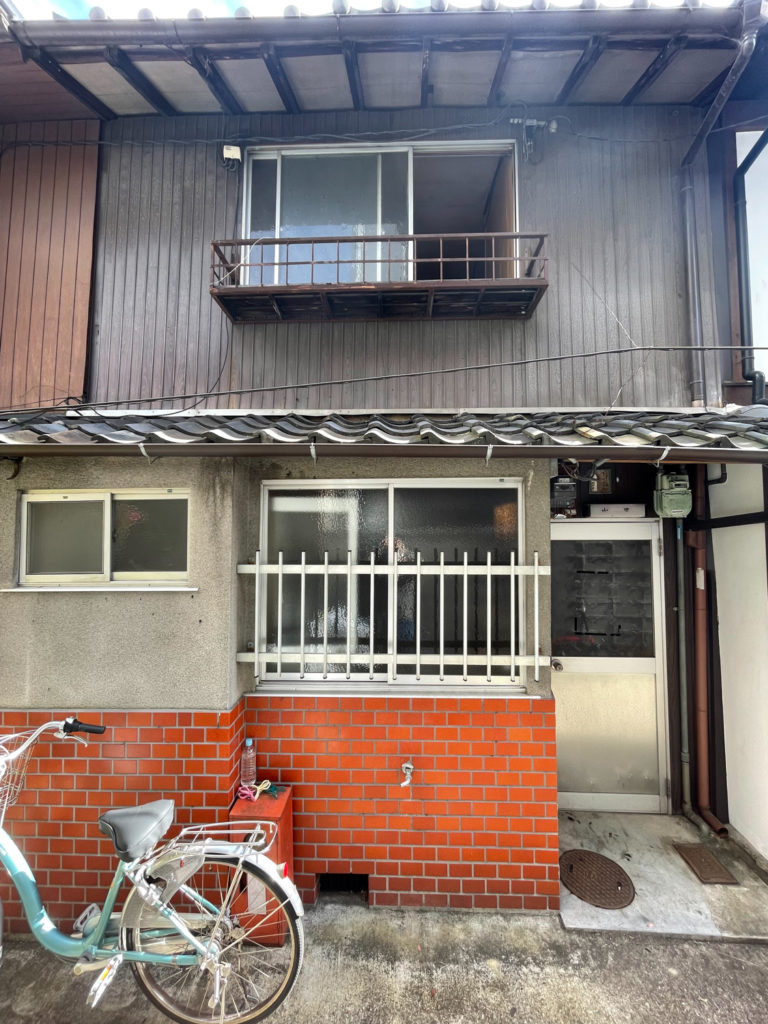
My house has undergone extensive renovations over probably several stages. What was most likely once a small garden was turned into part of the kitchen and sometime ago a toilet had also been installed. Nothing in the house was worth saving. I’ve ripped out all the interior walls, flooring and ceiling and the house is now completely bare. Underneath the subfloor of the tatami mats there is nothing but dirt. Many of the shared walls on both sides have deteriorated to such an extent that I can peek into my left neighbour’s kitchen through small cracks. If this wasn’t a Nagaya, it would probably have been torn down a long time ago, but because it is, you cannot simply tear it down as that would leave the two houses on both sides without walls on one side.
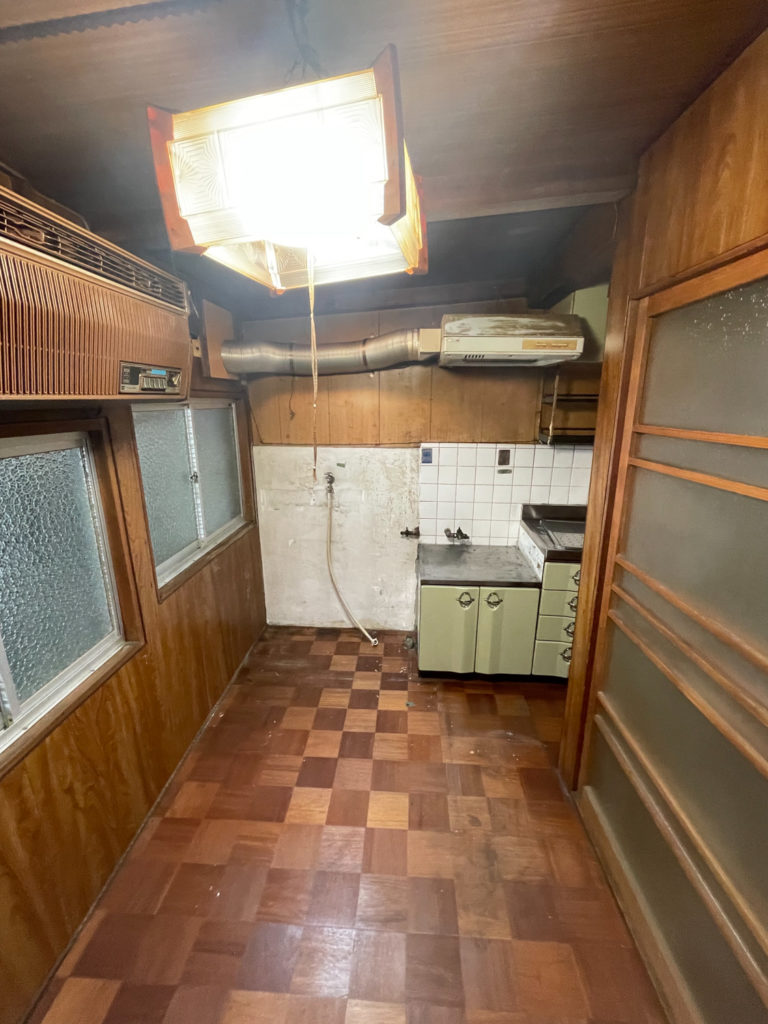
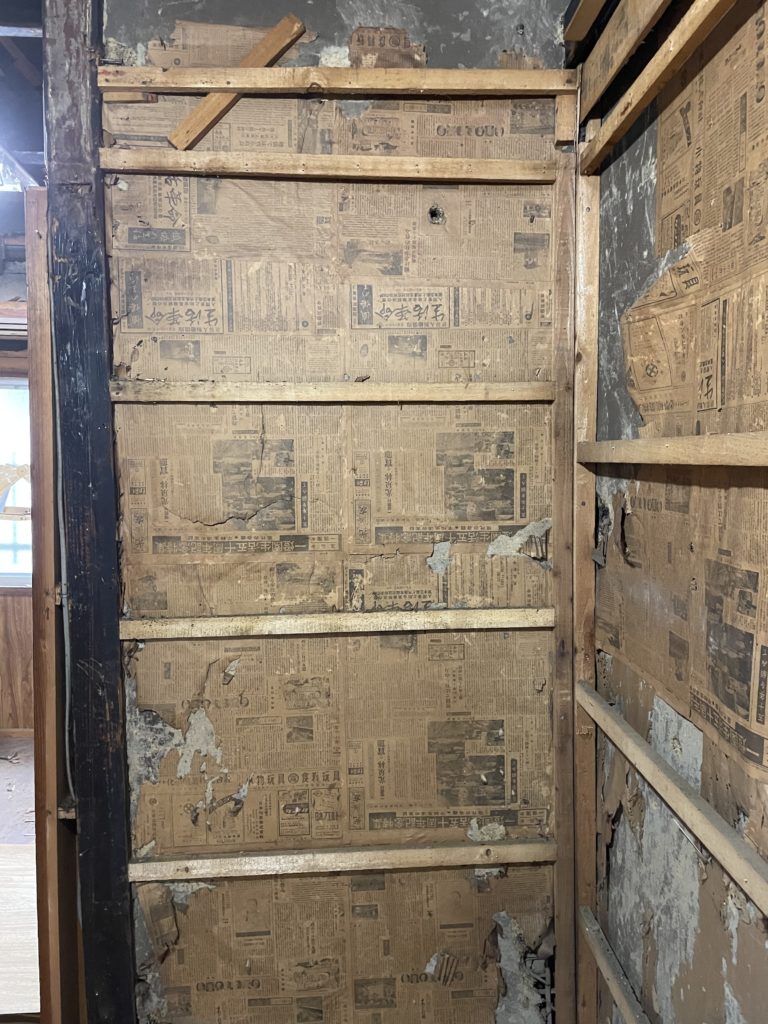
The house on the right of mine has recently been beautifully renovated. It serves as a benchmark to what I hope to achieve. With its pristine white shikkui wall and Kyoto lattice demado it is a beautiful example of Kyoto architecture.
The house on the left, where an elderly couple and their tiny dog lives, is, judging from the facade and the part of their walls I can see from the inside of my house, in a pretty bad shape. But, as is often the case, the couple doesn’t seem to mind living in a partly dilapidated home.
I plan to do much of the renovation myself, but am also hoping to enlist the help of some professional help. A good friend introduced me to a carpenter and he’s helping straighten out and exchange the slanting pillars (most of them, really). He’s a Kyoto local and no-nonsense kind of guy. He tells me he has worked on many houses in worse condition, so he just gets on with it and tackles one task after the other. He knows a guy who is going to help pour in a concrete foundation and then we can start the renovation in earnest.
